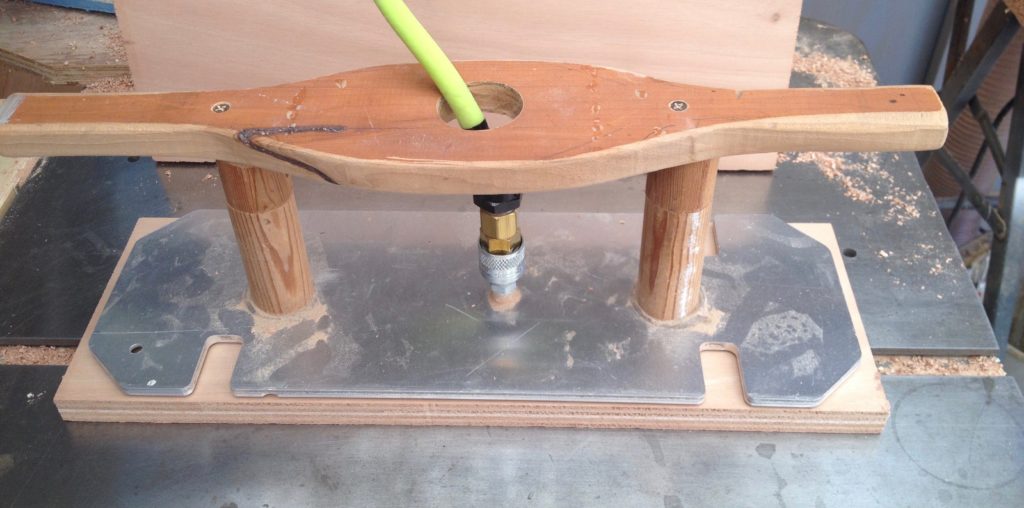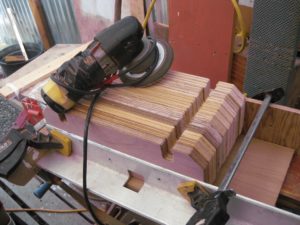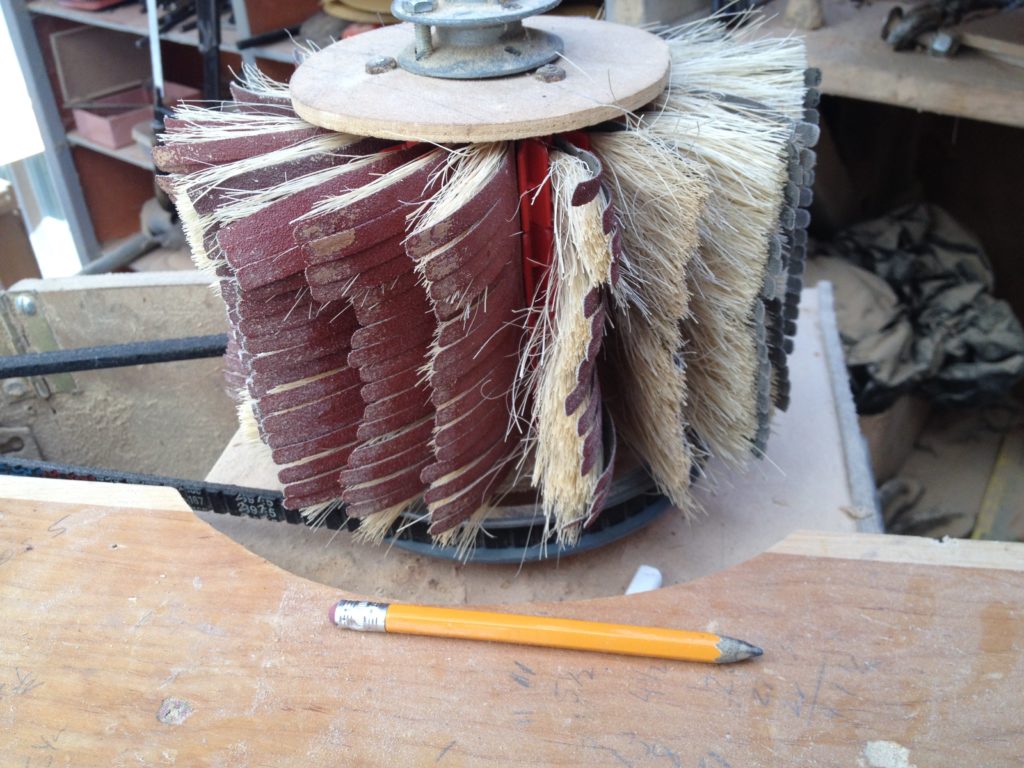The first few sets I made using a 3hp Makita Router and ½” flush trim bits. Although I built several sets, it didn’t work great. The bits burned and didn’t last long. I tried a 3hp Ryobi with a speed control and slowed it down a bit, but then the router didn’t have the power to cut the notches in one pass. Then I found a 3/8” flush trim bit and that worked quite a bit better still. Eventually, someone suggested a shaper and that worked best of all. I learned a 1 hp shaper is more powerful (a lot) than a 3hp router. The bit stays a lot cooler too, because removing the chips cools the bit. I could never figure a good way to collect the chips when using a router, and I tried, but its easy with a shaper.
Here is the pattern on top of the blank board:
You can also use a table saw to cut the notches. Here is an example: https://www.youtube.com/watch?v=JiZk1AsHIto
He moves a lot quicker than with the shaper, but I like the fact the shaper rounds all the notch corners and board ends (assuming your pattern is rounded) so there is less sanding. And with the table saw its another step to cut the four corners from each board.
With a pattern, when you go back months later to make more pieces, they will exactly match the earlier pieces. Since all the boards are very, very close to the same size you can gang the boards (with the same number of notches) up together, and sand the edges.
I use a flap wheel sander to sand between coats. With a spacer between two boards I can quickly sand the edges of two notched boards at one time.
Cutting notches moves pretty quickly now. It takes about a minute to cut a 2 notch piece, two minutes for the 4 and 6 notch pieces and 2-3 minutes for the 8 and 10 notch pieces. If everything goes well I can cut all the notches is less than a day.
****




Hi, I have a question for you. What should someone be looking for in a table saw? Are there specific features you really need to have? I want to make sure to get one that is as safe as possible to operate. I feel like safety is pretty important. Thanks in advance for your answer.
It depends on what you are trying to do and how much money you have. I have a old Makita table saw which I bought years ago for $100. It has served me well for over 20 years with Builder Boards and lots of other things I have built and fixed. On the other end I one went to a meeting of “Fine woodworkers” who pretty much agreed $3000 was the minimum for a table saw. All their saws are accurate to within a few thousandths of and inch and have saw stop which stops the blade if your fingers touch (or get near?) the blade. As for safety I think you should keep your fingers away from the saw blade, never work when you are tired or mad, and remember that at the end of the day when you are pushing yourself to finish, its time to quit. If you aren’t comfortable using a tool (and you shouldn’t be at first) get someone to show you how and run through how they stay safe.
Thank you for sharing such great info on how to make these amazing sets. Quick question, where did you get the pattern you use with the shaper? It looks like it’s metal and I was curious where to get that because we would really like to use this method to construct our set. Thanks for your time!